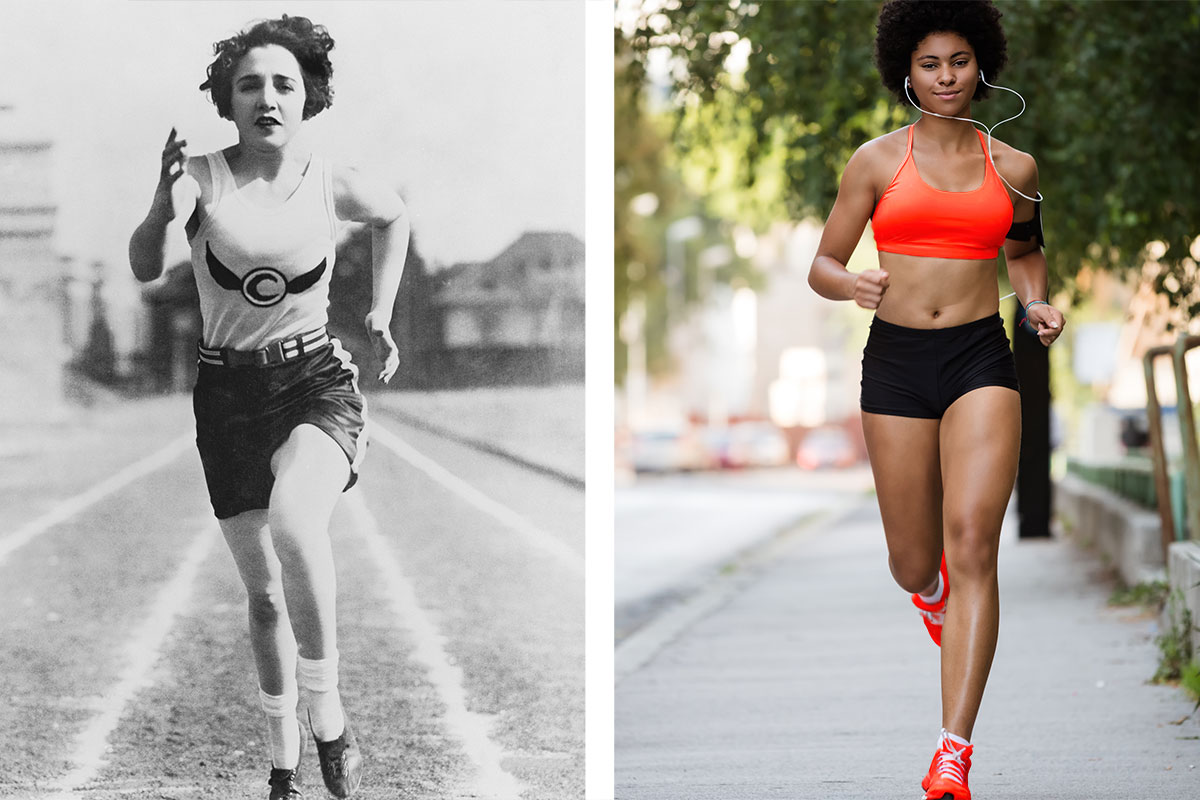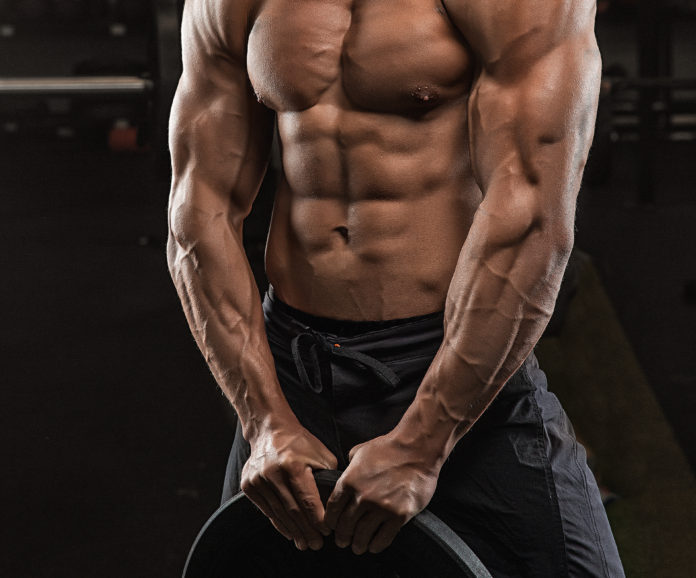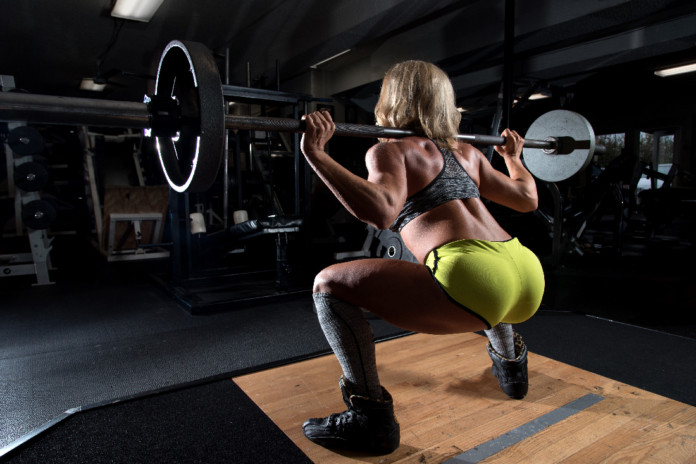Fitness
Avoid Over-Training – When Training to Failure Can Hurt You
Published
5 years agoon
By
fitinstyle
If you go into any gym or college training facility, you will see athletes pushing themselves to the limit. In order for an athlete to achieve greatness, he or she must push themselves to the limit, but there is a time when an athlete must pull back to avoid overtraining.
The body much like a race car, the body needs regular maintenance, if you hit the nitro button on the car too much, your going to burn out the engine. One of the easiest way of hitting the nitro button too much is by training to complete muscular failure each set. Training to muscular failure has been proposed to lead to greater gains in muscular strength and size because of greater neural drive when training at a closer proximity to muscular failure, implying that more motor units may be recruited.Advertisement
While failure can be a valuable tool in a bodybuilder’s training routine, there is some evidence to indicate that it comes with a significant cost.
Previous research has found that training to failure every set significantly increased resting levels of the catabolic hormone cortisol and suppressed anabolic growth factors such as IGF-1. This study demonstrated that taking every set to failure could lead to overtraining and a catabolic response. This study may indicate that bodybuilders who take every set to absolute failure may put themselves at risk of impeding long-term growth.
In one 12–week study, the researchers found no difference in the routines that were taken to failure and those that were not. This study only lasted 12 weeks, so long term effects of taking every set to absolute muscular failure is not known. Training to failure too frequently can a possible lead to overtraining, as previously reported with the study that training to failure resulted in greater increases in cortisol and decreased IGF-1 levels. A new study published in the International Journal of Sports Medicine reports that training to failure each set needs longer recuperation than those not training to failure.
This study analyzed the time course of recovery following two resistance exercise protocols differing in level of effort: maximum (to failure) vs. half-maximum number of repetitions per set.
Researchers had a group of volunteers perform 3 sets of bench presses and squats.
Nine males performed either:
3 sets of 8 reps (80% 1RM) to failure
3 sets of 4 reps (80% 1RM) not to failure.
Training to failure resulted in greater neuromuscular fatigue and longer muscle recuperation than the not training to failure group for 48 hours. This indicates it takes a longer time for full muscle recovery following intense resistance exercise that is taken to failure compared with a similar workout where sets are terminated before failure is reached. Future studies should be conducted to determine how fatigue extent influences MUs recruitment and RT-related muscle adaptations on strength trained and untrained individuals.
Some research question the scientific validity of training to failure each set. For example, using trained participants train to failure and the other group train just short of muscular failure. At the end of the study, both group increased muscular strength and muscle mass equally, with no differences between the groups. It seems that when volume is equated between groups, it does not matter whether a person trains to failure or not to failure.
Researchers wanted to test the validity of training to failure vs. not training to failure in a series of different training methods.
Researchers had one group perform:
5 sets of 5 reps (Not Training to Failure).
25 reps in as few sets as possible (Muscular Failure).
Under both workout conditions, they had 2 minutes rest between sets (2 seconds concentric, 1 sec isometric, 2 seconds eccentric). The training load and training volume were both the same. The The training protocol to failure required ~7 minutes and 6 seconds to complete, whereas the training protocol not to failure 5×5 protocol required 12 minutes and 10 seconds to complete.
The study suggests that, when training just short of muscular failure using a 5×5 approach, may attain similar strength increases when compared to training to complete muscular failure. When volume is matched, both protocols produced the exact same increases in strength but training to failure appears a more time-efficient protocol.
“Training to failure resulted in greater neuromuscular fatigue and longer muscle recuperation than the not training to failure group for 48 hours”
Is resistance training to muscular failure necessary? By Nóbrega and Libardi, in Frontiers in Physiology (2016)
Sampson, J.A, and H. Groeller. “Is repetition failure critical for the development of muscle hypertrophy and strength?” Scand J Med Sci Sports (2015): Ahead of print.
González-Badillo JJ, Rodríguez-Rosell D, Sánchez-Medina L, Ribas J,
López-López C, Mora-Custodio R, Yañez-García JM, Pareja-Blanco F. Short-term Recovery Following Resistance Exercise Leading or not to Failure. Int J Sports Med. 2015 Dec 14.
You may like
BODY
Yesterday and Today
The entire fitness industry is changing rapidly. Yes, there are still a new detoxes, cleanses, weight loss pills, or exercise gadgets promising EFFORTLESS weight loss.
Published
5 years agoon
July 10, 2019By
fitinstyle
The entire fitness industry is changing rapidly. Yes, there are still a new detoxes, cleanses, weight loss pills, or exercise gadgets promising EFFORTLESS weight loss.
They are promoted across social media feeds, using ads that always appear too good to be true. Typically, they also use “doctor” and “celebrity” endorsements trying to enhance credibility. My purpose is not to discourage you. Instead, I hope to enlighten and encourage you. It may also save you some disappointment when you don’t end up looking like the fitness model on that supplement bottle.
Mainstream lifestyle
Although transformations take work, time, and dedication, they are happening. Fitness is transitioning from a small subculture of passionate enthusiasts to a mainstream lifestyle. People are steadily reversing Americas’ couch-potato ways. When it comes to wellness, it’s more than just a routine, it’s a lifestyle. The numbers say it all. According to the Global Wellness Institute, the wellness industry is a $3.7 trillion business. It grew 10.6 percent from 2013 to 2015, and is expected to grow 17 percent over the next five years.

The “Yesterday” look of fitness from the Jane Fonda era.
Access
The recent popularity of easy-to-access group fitness, community walking classes and wearable technology (i.e. the Apple Watch) suggests that individuals today don’t just want to go to a gym to sweat. It seems that they want to incorporate unique, fitness experiences into their daily lives. People of all ages are now enjoying fitness for the social benefits as much as the health outcomes. With a major shift towards mindfulness and time-efficient training, the fitness industry has been changing on a global scale.

Transformation of exercise into daily life
Break up the monotony
Exercise can seem boring when only focusing on anatomical and physiological outcomes. However, sports-conditioning classes provide us with performance-based outcomes that make the exercises more engaging and fun. Today’s active-lifestyle fitness is unlike yesterday’s walk on the treadmill. Kickboxing is a great form of exercise and, because of the many advantages, it is a popular fitness regimen today. Because we are living with incredible amounts of stress in our lives, hitting a bag or throwing forceful air punches using the force of our whole bodies is an amazing release. This is one reason boxing is the “knock-out” workout of the year! Or, you might want to break up the monotony of jazzercise or spinning classes with a hiking workout. Certainly, the variety will help put different muscles to work, boost cardio, and burn some fat.
Technology
The innovative technology of 2018 has brought us to virtual reality workouts. Treadmills that seamlessly connect to a game. This allows you to run, pivot, jump and crouch while wearing sneakers that wirelessly interact with sensors on the treadmill. It automatically measures your steps and calories, allowing you to track how hard your body’s working (while your mind is busy chasing bad guys!). The introduction of VR fitness means that you can go for scenic runs, travel the world, and compete in global events without ever leaving your living room.
Easier and more practical
The 1960’s was the era of the “crewneck sweatshirt”. The ultimate ’60s fitness look was mid-thigh shorts, a cotton tee or tank, and a gray sweatshirt. This no-frills outfit was perfect for pumping iron. Today, as part of the active-lifestyle mindset, athletic designs favor a more minimalist look that can go anywhere. Hence, the fabric and fit of fitness clothes has become indistinguishable from typical street wear. The ability to exercise has become easier and more practical.
Benefits from physical activity are not restricted to exercise performed in the gym. In fact, one of the easiest ways to improve your overall health may be through increasing the amount of low-intensity physical activity you perform throughout the day. Exercise is no longer a curse word! Fitness and an active, healthy lifestyle represents the new Transformation. We are transforming the way we think about exercise and fitness. As a result, it no longer has to be dreadful, but an uplifting, fun lifestyle!
- The Ultimate Guide to Berberine: Unlocking Its Health Benefits and Healing Properties
- The Ultimate Guide to Berberine: Unleashing its Health Benefits for Blood Sugar Control, Weight Management, and More
- The Ultimate Guide to Berberine: How This Natural Compound Can Revolutionize Your Health
- The Ultimate Guide to Berberine: Unlocking Its Powerful Health Benefits for a Healthier You
- Exploring the Health Benefits of Berberine: A Natural Remedy for Diabetes, Cholesterol, and More
Fitness
Maximize the growth of the triceps without damaging your joints
This training will help you prepare properly, train at your highest level and minimize any risk to those important joints in the mid-arm. You are seeing a time commitment of around 30 minutes and you can complete this exercise as part of your arm workout or after a group of pushing muscles such as your chest or shoulders.
Published
5 years agoon
July 1, 2019By
fitinstyle
Since the triceps make up the majority of the upper arm and are involved in a lot of pressure actions, it can be easy to fall into the temptation of training them hard with heavy weight and reckless abandonment.
This training will help you maximize the size of your triceps and, at the same time, minimize the impact and load that could disturb your elbows.
The problem is that in the course of many training sessions, you have a greater risk of annoying pains or even serious injuries in the elbows. If your elbows suffer, you run the risk of not being able to train as best you can, of losing the hard earned muscle and of the general problems that can also affect your life outside the weight room.
This training will help you prepare properly, train at your highest level and minimize any risk to those important joints in the mid-arm. You are seeing a time commitment of around 30 minutes and you can complete this exercise as part of your arm workout or after a group of pushing muscles such as your chest or shoulders.
Single Arm Cable Extension – 3 sets of 20, 15, 10 reps per arm.
The movements of the cables are better to isolate a muscle group and heat it because the movement is restricted, it has tension throughout the range of motion and its joints can produce synovial fluid that acts as a lubricant.
Whichever arm is weakest is the one you should start with. Perform 20 repetitions with each arm while controlling the speed at which you raise. Focus only on contracting the muscle and do not let the weight be a big concern. Once you finish with the first arm, repeat with the other arm and rest for 60 seconds before starting again. Add weight with each set as the repetitions decrease.
Close Grip Bench Press – 4 sets of 12, 10, 8, 6 reps.
The shoulder blades should be retracted and pulled so that your chest can protrude higher. This also helps to minimize shoulder involvement so you can concentrate more on the triceps.
Keep your grip around the width of your shoulders so you do not put any tension on your wrists. When you lower the bar to your chest, stop at the bottom for a second. This eliminates the impulse and makes the triceps work harder. After that brief pause, press up as high as you can until your arms are close to blocking. Do not block them completely! Keep that tension in the muscles. Add weight after each series and rest for 90 seconds between sets.
Lying Rolling Dumbbell Triceps Extension – 3 sets of 10 reps.
You probably know them as “skull grinders or crushers”. You can do them on the floor or in a bank. The differences with these are that you are using dumbbells instead of a bar and you will allow the dumbbells to roll back behind you as you lower them. They should go around your shoulders and then roll them back as if you were trying to touch the floor. Go as far as you can and do not try to force the stretch. Once you have rolled them back, wind them again and press them to the length of the arms. Squeeze the triceps as hard as you can before lowering them again. Stick with a weight that will force you to work, but not to fail. Rest for 60 seconds between sets.
Kneeling Rope Pressdown – 3 sets of 15 reps.
The only difference between these and the standing version is that you’re on your knees which decreases your ability to use momentum. That makes your triceps work harder which is what we want at the end of the workout. We’ve also went back to a cable exercise for the same reasons we started, isolation and less toll on the elbows.
Spread that rope apart at the bottom as much as you can. Don’t forget to turn your wrists so you can maximize that contraction. Slowly let the rope back up but don’t let your upper arms come up with them. Lock them into your sides. Use the same weight each set and rest for 45 seconds in between. They’ll burn at the end but that’s what we want. 6 weeks on this program will help you see improvement in the triceps without any extra toll on the elbows.
- The Ultimate Guide to Berberine: Unlocking Its Health Benefits and Healing Properties
- The Ultimate Guide to Berberine: Unleashing its Health Benefits for Blood Sugar Control, Weight Management, and More
- The Ultimate Guide to Berberine: How This Natural Compound Can Revolutionize Your Health
- The Ultimate Guide to Berberine: Unlocking Its Powerful Health Benefits for a Healthier You
- Exploring the Health Benefits of Berberine: A Natural Remedy for Diabetes, Cholesterol, and More

Which is the King for Mass, While Minimizing Injury?
Developing strong, muscular legs requires you to perform a key exercise, the Squat. In the past, the traditional back squat was the bread and butter of all training programs. The problem is many athletes and competitors do not perform the back squat correctly, hence causing injuries that hinder their use of this proven exercise.
EXAMINING THE “BACK SQUAT” To perform the Back Squat effectively, you must have good shoulder external rotation to be able to place the bar in the correct low position. Many athletes who lack this mobility, place their hands wide on the bar, which causes your scapula to change position, ultimately leading to a rounding position of your spine. An additional problem performing the back squat is the “forward lean”. This causes your paraspinal muscles to become relaxed, because they are stretched and now causes excessive stress on your spine. Ultimately, it can risk vertebral disk damage.
EXAMINING THE “FRONT SQUAT” My favorite bar to use with the front squat is the yolk bar or cambered bar if your gym has one. Performing the front squat allows you to maintain an upright position, placing less strain on your spine and requires less or no use of your shoulders, except to hold the bar across the front of you. The front squat is an EXCELLENT movement to get bigger, stronger quads–probably the best exercise there is. Because your position is more upright, it emphasizes the quads more. Another good quality about front squats is the form is self correcting: If you’re not straight enough you’ll drop the bar… if you’re not holding the bar right you’ll drop it… if you don’t keep your elbows up you’ll drop it. It’s an exercise that pretty much forces your form to be good. Because you’re holding the weight in front of your body, and you must remain upright; your entire core gets a great workout trying to stabilize the weight and keeps you upright.
The benefits of this exercise don’t end with your legs. In general, squats create an overall anabolic environment in the body that maximizes gains from other exercises in your routine; squats have been long used as an effective training method in just about all sports. Squats involve a large muscle group and require a tremendous amount of energy to trigger the release of extra testosterone and growth hormone in the bloodstream. This powerful exercise is exactly what you need to develop strength and power, which will have a direct effect on your testosterone levels and fat burning potential.
SUPPLEMENTS TO ACCELERATE GAINS You can squat till you drop, but if you don’t have what the body needs, you’re just wasting your time. Always supply your body with a pre-workout supplement; the consumption of a pre-workout supplement delays the fatigue while increasing the muscular endurance and reaction time. My personal choice is Infinite Labs. Juggernaut. HP; it offers a unique creatine blend along with other patented ingredients. The HP represents cutting edge technology in the Nitric Oxide category. A product containing nitric oxide producing ingredients is one of the fastest, easiest and most effective ways to start seeing massive gains of lean muscle mass, with little to no side effects and numerous benefits to your bodybuilding routine and overall health. Juggernaut. HP also includes Agmatine, the new and more effective supplement to increase the Nitric Oxide production. There is no better “PUMP” out there.

GETTING IT GOING WITH THE “FRONT SQUAT”
If using a yolk bar or cambered bar, position the bar as close as possible to your neck to minimize forces pushing you forward causing rounding of your spine.
Choose a stance that is comfortable to you, or vary between feet shoulder width and a wide stance every other workout.
Attack the bar, approach the bar every set as if you have no weight on it!
Once holding the bar, generate power throughout your entire body, starting with locking your muscles in from ground up.
Stay in an upright position (keeping your chest up).Descend in a controlled manner, and then drive out of the hole with explosiveness.
Never sacrifice reps for form, consequences can lead to injury!
Reference:
A BIOMECHANICAL COMPARISON OF BACK AND FRONT SQUATS IN HEALTHY TRAINED INDIVIDUALS
JONATHAN C. GULLETT, MARK D. TILLMAN, GREGORY M. GUTIERREZ, AND JOHN W. CHOW Department of Applied Physiology and Kinesiology, University of Florida, Gainesville, Florida
Recent Posts
- The Ultimate Guide to Berberine: Unlocking Its Health Benefits and Healing Properties
- The Ultimate Guide to Berberine: Unleashing its Health Benefits for Blood Sugar Control, Weight Management, and More
- The Ultimate Guide to Berberine: How This Natural Compound Can Revolutionize Your Health
- The Ultimate Guide to Berberine: Unlocking Its Powerful Health Benefits for a Healthier You
- Exploring the Health Benefits of Berberine: A Natural Remedy for Diabetes, Cholesterol, and More
Advertisement
Sponsored Ads
TRENDING
-

 HEALTH & WELLNESS5 years ago
HEALTH & WELLNESS5 years agoAcidophilus: A Probiotic Bacterium
-

 herbs3 months ago
herbs3 months agoThe Ultimate Guide to Ashwagandha Extract: Stress Relief and Optimal Health Unveiled
-

 HEALTH & WELLNESS4 years ago
HEALTH & WELLNESS4 years agoHerbs and Essential Oils to Fight Coronavirus
-

 TRAINING & FITNESS5 years ago
TRAINING & FITNESS5 years ago6 Ways to Decrease your Shoulder Pain!
-

 HEALTH & WELLNESS5 years ago
HEALTH & WELLNESS5 years agoWhy Muscles Get Sore
-

 DIET & NUTRITION5 years ago
DIET & NUTRITION5 years agoLow Carb Diet: Carbohydrates Influence on Testosterone
-

 Fitness5 years ago
Fitness5 years ago“No Pain, No Gain” True or Just a Fitness Myth
-

 HEALTH & WELLNESS5 years ago
HEALTH & WELLNESS5 years agoThe Best Shoulder Workout in Only Six Moves


